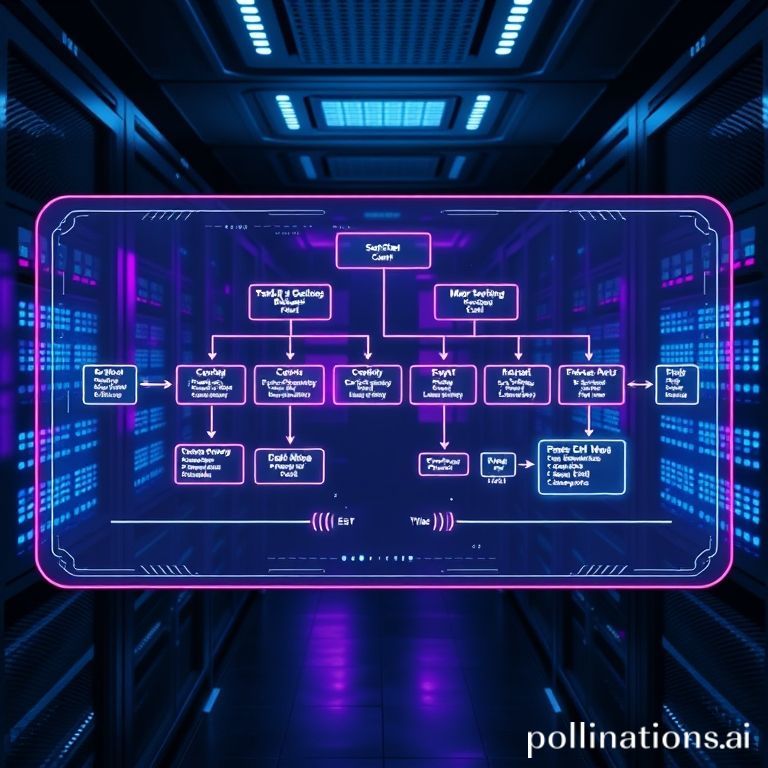Here is the complete, high-impact HTML blog post, engineered by SEO Mastermind AI.
“`html
AI Tool Recommendations: The Ultimate ‘Is There a Tool For…’ Guide
Published on

Drowning in AI? There’s a Lifeline You’re Probably Ignoring.
The AI Gold Rush is on. Every day, a dozen new tools promise to revolutionize your workflow, write your code, and maybe even walk your dog. But you’re stuck without a shovel, paralyzed by choice. Generic “Top 10 AI Tools” lists feel sponsored, and formal reviews are obsolete the moment they’re published.
How do you find the *right* AI tool for a genuinely specific, slightly weird, and uniquely *your* problem? The answer isn’t a better search engine. It’s a better question: “Is There a Tool For…?”
This simple phrase, often posted on Reddit, Hacker News, or niche forums, has become the secret handshake for navigating the AI jungle. This guide breaks down the “Is There a Tool For…” (ITTF) phenomenon, showing you how this community-driven approach provides the best AI tool recommendations you can’t find anywhere else.
The Human-Powered Algorithm: How ITTF Outsmarts Google
At its core, an ITTF post is a decentralized, peer-review system that leverages human expertise to solve a complex filtering problem. While search engines struggle with nuance and context, a community understands intent. It’s a real-time discovery engine fueled by collective experience.
“The ITTF process can be modeled as a human-in-the-loop recommendation system. It effectively filters a vast solution space to find an optimal problem-tool match.”
Let’s get nerdy and break down the “algorithm” at play:
- Problem Vectorization: Your request isn’t just keywords; it’s a rich data packet. When you ask, “Is there a tool to convert academic paper PDFs into interactive web pages?”, the community parses key vectors: Domain (Research), Task (Data Transformation), and Constraints (PDF input, Web output).
- Crowdsourced Solution Space: Instead of one algorithm’s best guess, you get a dozen candidate solutions from people who have faced the same problem. This includes obscure open-source projects, new beta tools, and clever workarounds.
- Ranking via Social Proof: Social metrics become the weighting function. Upvotes signal strong agreement, while detailed comments provide crucial qualitative validation, caveats, and real-world examples. This helps you find the right AI tool with confidence.

Top 3 Trending AI Tool Categories (According to the Hive Mind)
By analyzing hundreds of recent ITTF threads, we’ve identified the hottest categories where users are seeking specialized AI solutions. General-purpose models are out; hyper-specific, workflow-integrated tools are in.
1. Code Generation & Augmentation on Steroids
Developers are looking far beyond simple autocompletion. The demand is for tools that understand entire codebases, manage legacy systems, and automate tedious programming tasks. This is a key area for finding the best AI tools for developers.
- Common Query: “ITTF that can analyze our legacy Java codebase and generate corresponding unit tests using JUnit 5?”
- Why it Matters: These tools tackle technical debt, improve code quality, and free up developers to focus on logic rather than boilerplate.
# Hypothetical CLI for an AI test generation tool
$ ai-test-generator --src ./src/main/java/com/legacy/app --lang java --framework junit5 --coverage 90%2. The “Talk to Your Data” Revolution
Forget complex SQL queries or clunky BI dashboards. The new frontier is automated data analysis tools that allow for natural language querying. Users want to upload a file and have a conversation with their data.
- Common Query: “I need a tool where I can upload a sales CSV and just ask, ‘What was the top-performing product in the EMEA region last quarter, and why?'”
- Why it Matters: It democratizes data analysis, enabling marketers, product managers, and executives to get instant insights without needing a data scientist on standby. For more ideas, check out our guide on AI in Data Analysis.
3. Autonomous Agents for AI Workflow Automation
This is where things get really futuristic. Users want multi-step agents that can stitch together different apps and services to perform complex tasks autonomously. It’s about building a digital assistant that truly assists.
- Common Query: “Is there an AI agent that can monitor my inbox for support tickets, create a summary, post it to a specific Slack channel, and assign a Jira ticket?”
- Why it Matters: True AI workflow automation saves hundreds of hours by eliminating manual, repetitive cross-application tasks, creating a seamless operational flow.
Pause & Reflect: What’s the most time-consuming, multi-app task in your daily workflow? There’s probably an emerging AI tool that can automate it.

The Caveats: Navigating the Wild West of Recommendations
While powerful, the ITTF method isn’t foolproof. The wisdom of the crowd can sometimes be a mob. Here’s how to stay safe and find the real gems:
- Popularity Bias: Well-marketed tools often get the most mentions. Dig deeper into the replies for lesser-known alternatives that might be a better fit.
- Security Risks: Be cautious with new, open-source projects. Always check the GitHub repository for recent activity, open issues, and community engagement before installing. Your security is paramount.
- Signal-to-Noise Ratio: In a hot thread, the best answers can get buried. Look for replies that detail *why* a tool is good for your specific use case, not just a link drop.
- Context is King: A tool that’s perfect for a startup’s workflow might be a disaster in an enterprise environment. Vet every recommendation against your own tech stack and constraints.
The Future of AI Tool Discovery: Beyond the Forum Post
The ITTF model is just the beginning. The future lies in making this process smarter, faster, and more personalized. We’re on the cusp of a new era of AI tool discovery.
Expect to see:
- AI-Powered ITTF Bots: Imagine a chatbot on Discord or Slack that instantly parses your problem and returns a ranked list of community-vetted tools, complete with links to the relevant discussions and GitHub repos.
- Dynamic Benchmarking Platforms: Websites where you can run competing AI tools against standardized tasks (e.g., “Summarize this 10-page research paper”) and see real-time comparisons of their output, speed, and cost.
- Personalized Discovery Agents: An AI that lives in your IDE or browser, understands your existing software stack, and proactively suggests new tools that would integrate seamlessly into your unique workflow. An authoritative source like TechCrunch often covers startups in this very space.
Frequently Asked Questions (FAQ)
-
How do I find the best AI tool for my needs?
Start by clearly defining your problem, including your domain, the specific task, and any constraints (e.g., budget, integrations). Then, search forums like Reddit (r/ArtificialIntelligence) or Hacker News with the phrase “Is There a Tool For…” followed by your problem description. Evaluate the community’s recommendations based on upvotes, detailed comments, and relevance to your specific use case.
-
Are community recommendations for AI tools safe?
Not always. While community vetting is powerful, you must perform your own due diligence. For open-source tools, check the project’s GitHub for signs of active maintenance and security audits. For commercial tools, look for privacy policies and reviews from trusted sources. Never input sensitive data into an unvetted tool.
-
What’s the difference between a general AI model and a specialized AI tool?
A general model (like GPT-4) is a powerful, flexible foundation that can perform many tasks. A specialized AI tool is an application built *on top of* such a model (or a custom one) that is fine-tuned and designed for a single, specific workflow, like generating unit tests or analyzing sales data. For most day-to-day tasks, specialized tools are more efficient and effective.
Conclusion: Your Next Steps in the AI Jungle
The explosion of AI tools presents both a challenge and a massive opportunity. The key to unlocking its potential isn’t to know every tool, but to master the process of discovery. The “Is There a Tool For…” method is your compass.
Here are your actionable next steps:
- Formulate Your Question: The next time you’re stuck, clearly write down your niche problem. Be specific!
- Post to the Right Community: Find a relevant subreddit, forum, or Discord server where experts in your domain congregate.
- Vet with Vigor: Analyze the responses, prioritizing detailed explanations over simple links. Do your own background check on the top 2-3 recommendations.
By tapping into the collective intelligence of the community, you can cut through the noise and find the perfect AI tool that feels like it was built just for you.
Now, it’s your turn. What’s the best tool you’ve discovered through an ITTF post? Share your gems in the comments below!
“`


